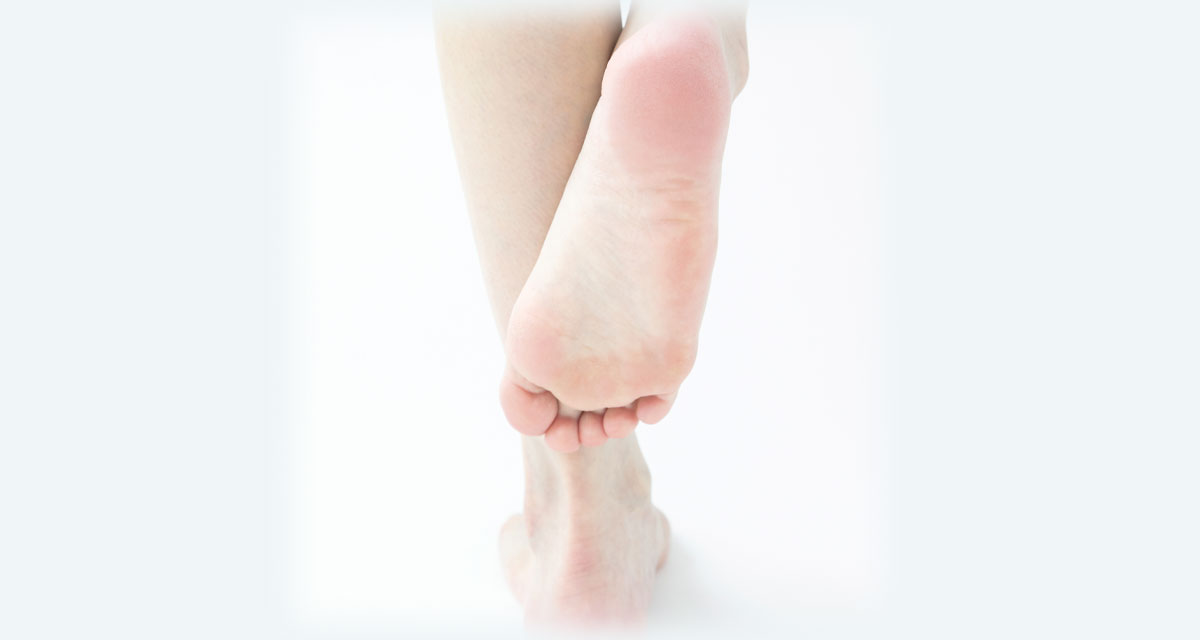BY JAMIE LOBER
Athlete’s foot, sometimes called tinea pedia, is a skin disease caused by a fungus. As the name would suggest, it usually occurs between the toes, but can also affect other parts of the feet. Since shoes cover your feet, they can create a warm, moist, and dark environment where fungus will breed. Swimming pools, locker rooms, and showers can have the same dampness and warmth, which is why the condition is linked to athletes. Men and women of all ages can be affected by athlete’s foot, regardless of whether or not they participate in athletics, though, the American Academy of Pediatrics found that it mostly occurs in teens. It is always important to have your feet checked by a doctor, because there are other conditions, like psoriasis and eczema, that present like athlete’s foot.
How Do You Know?
Blue Cross/Blue Shield of North Carolina found that about 5 percent of the U.S. population suffers from foot infections. The key to healing is identifying the problem early. They listed symptoms of athlete’s foot, such as:
- Dry skin
- Itching
- Inflammation
- Blisters
- Redness
- Scaling skin
Foot Care Matters
The American Podiatric Medical Association found there are some means of prevention. It all comes down to maintaining good foot hygiene by doing the following:
- Washing feet daily with soap and water and drying between the toes.
- Avoiding walking barefoot.
- Using shower shoes if you have to use a public shower.
- Wearing light and airy shoes.
- Reducing perspiration using powder.
- Changing shoes and socks regularly to decrease moisture.
- Wearing synthetic blend socks that wick away moisture, and changing them frequently if you sweat.
- Wearing shoes or flip-flops around a pool or beach, so you do not contract a bacterial infection.
- Staying hydrated to reduce any foot swelling from the heat in the warmer months.
- Not sharing towels, linens or shoes with someone who has athlete’s foot.
It is about making good, healthy decisions. Blue Cross/ Blue Shield of North Carolina named other precautions, such as not using the same towel to dry infected and non-infected areas; washing towels with detergent, bleach, and hot water; and not wearing the same pair of shoes every day.
You want to stay on top of the preventive measures to keep your family safe from athlete’s foot. The American Academy of Pediatrics acknowledged that organized sports offer great benefits to youth, but without focusing on hygiene- and sickness-prevention protocols, one child getting athlete’s foot can affect an entire team. They asked that athletes not share towels, personal items, or water bottles. Then it is up to the coach to make sure the practice facility is clean.
Treatment
As with any condition, early identification is important. There are antifungal medications to relieve the itching, burning, and scaling. It could be an ointment, cream, spray, or powder, and is usually sold over-the-counter. If your case does not respond, prescription-strength medication may be required, like an antifungal pill that you would take orally. It is vital that you follow the doctor’s instructions, even if you think the athlete’s foot has disappeared, as the infection can return.
There are also several things you can do for symptom relief. You can soak your feet in cool water to try to help with the itching. It is important not to scratch the rash. Some suggest soaking your feet in saltwater or diluted vinegar to dry up blisters. Knowing what to expect can put your mind at ease. The sooner you see the doctor, the better your prognosis will be. You may be diagnosed based on your symptoms, or a skin test, called a skin lesion potassium hydroxide exam, may be ordered just to confirm everything.
Goodbye to Athlete’s Foot
New developments continue to arise regarding athlete’s foot. Alternative therapy, like tea tree oil, has been found to be successful in some cases. Remember, everyone is different, so you want to be patient. Mild cases of athlete’s foot take about two weeks to clear up and at other times, your case can take longer. You will get better!


















